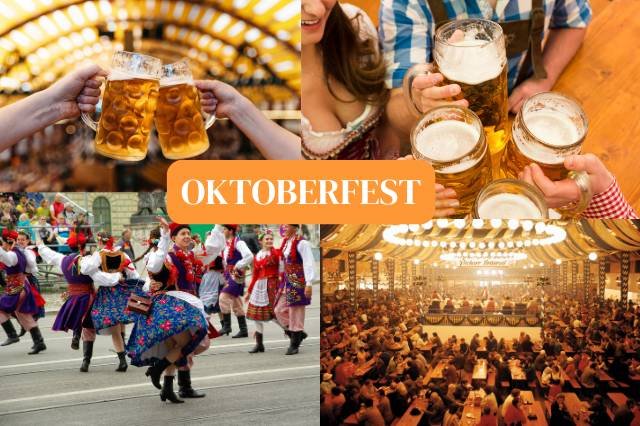“When’s the best time to explore Europe?” Short answer: it depends on what you want—sunny beach breaks, crowd-free city strolls, festive markets, or vineyard drives. This guide breaks down weather, crowds, costs, and travel styles to help you pick the perfect month for your trip in 2025/2026. We’ll also flag the sweet-spot “shoulder seasons,” when prices are fair, days are long, and popular sights are blissfully less busy.
✈️ Early deal-check: Compare flights on Skyscanner and book flexible, well-rated stays with Booking.com. You’ll lock in good prices for peak months and snag bargains in the off-season.

Best Time Overall
- May–June and September–early October. Expect mild to warm weather across most of Europe, long daylight hours, vibrant festivals, and fewer crowds than July–August—often at lower prices.
- Cheapest months: January–March and November (excluding ski hotspots and Christmas market cities).
- Beach time: Late June–early September (warmest sea temps usually August–September in the Med).
- Ski season: Mid-December–March in the Alps and Dolomites; high snow reliability in January–February.
- Late April–June: Cities feel alive, parks are in bloom, daylight stretches late, and accommodation is more affordable than peak summer.
- September–early October: Warm seas in the Mediterranean, grape harvests in wine regions, golden light for photography, and calmer queues at major sights.
Why not July–August? You’ll get guaranteed summer vibes, but expect higher prices, bigger crowds, and heatwaves, especially in Southern Europe. If you must travel, then book early and plan siesta-friendly schedules.
Factors to Consider When Deciding the Best Time to Travel to Europe
When planning a trip to Europe, several factors should influence your decision:
- Weather: Europe’s climate ranges from cold winters in the north to warm Mediterranean summers in the south.
- Budget: Prices for flights and accommodations fluctuate significantly based on the time of year.
- Crowds: Europe’s popular tourist spots can get crowded, especially in summer. However, visiting during shoulder seasons can give you a more relaxed experience.
- Events and festivals: Timing your trip around special events can make your visit even more memorable.
Understanding these factors can help you choose the ideal time to visit Europe based on your preferences.
Best Time to Travel to Europe 2025: An Overview
Europe is a year-round destination, but when is the best time to travel to Europe? Let’s break it down by seasons, events, and personal preferences to give you a clear picture of when to pack your bags.

Best Time to Travel to Europe Weather

Visiting in Spring (March, April, May)
Spring in Europe is one of the best times to visit if you prefer mild weather and fewer tourists. From March to May, Europe emerges from winter with blooming flowers and comfortable temperatures. This season is ideal for exploring cities like Paris, Rome, and Barcelona and for cultural experiences like Semana Santa in Spain.
What’s great about spring? There are fewer crowds, cheaper prices, and stunning scenery. You’ll miss the high summer tourist rush but still get pleasant weather for sightseeing.
Festivals & moments to catch
- Cherry blossoms: late March–April in parts of France, Germany, the Netherlands, and the UK’s parks and gardens.
- Easter & Holy Week (Semana Santa): iconic processions in Spain and Italy (book early).
- King’s Day (Netherlands, late April) and spring flower shows in the UK and beyond.
Affiliate CTA: Book cherry blossom tours with Viator.
- Pros: Pleasant weather, Comfortable temperatures, smaller crowds, lower prices than summer, affordable travel, photogenic cities.
- Cons: Unsettled showers in places; Cooler temperatures in Northern Europe, Alpine trails may still have snow in early spring.
Visiting in Summer (June, July, August)
Summer is Europe’s high season, especially for beach lovers. This is peak season: hot, buzzing, and expensive in many hotspots. The Mediterranean region (Greece, Italy, Spain, Croatia) shines for islands and beaches; Northern Europe enjoys its best weather and ultra-long days.
This is also the time when you’ll see vibrant festivals like San Fermin (Running of the Bulls in Pamplona, Spain) and Glastonbury Festival in the UK.


However, summer comes with a caveat: higher prices and large crowds. If you want to spend a little more and don’t mind the crowds, summer offers fantastic beaches, extended daylight hours, and great outdoor activities.
What to know
- Heat & queues: Expect 30–38°C in Southern Europe during heatwaves. Book skip-the-line tickets and visit landmarks at your convenience, whether early or late.
- Festival overload: From music festivals in the UK/EU to open-air cinema in Rome and Athens.
- Price surge: Flights, ferries, and hotels spike—reserve months ahead for deals.
Affiliate CTA: Reserve skip-the-line tours with GetYourGuide.
- Pros: Ideal for beach holidays, lively nightlife, lots of festivals, and long days and evenings.
- Cons: Expensive, crowded, and often very hot in Southern Europe; the midday heat can slow down sightseeing.
Read More: Best Places to Visit in Europe 2024 | Top European Cities to Visit
Visiting in Fall/Autumn (September, October, November)
Autumn is one of the best times to visit Europe if you’re looking for a balance between good weather and fewer tourists. Expect warm seas, comfortable city temps, and smaller crowds. November is cooler and darker up north, but a bargain month for city breaks almost everywhere.
September and October offer mild temperatures and the beautiful changing colors of fall. This is also perfect for events like Oktoberfest in Munich and grape harvests in France and Italy.

Fall/Autumn is a shoulder season, meaning you’ll get lower prices for flights and accommodations, and the weather is still pleasant enough for exploring.
Festivals & flavours
- Harvest season: Wine regions in France, Italy, Spain, Portugal, Germany, Austria.
- Oktoberfest (late Sept–early Oct) in Munich and beer festivals across Central Europe.
- Autumn colours: Alpine valleys, Scottish Highlands, Slovenian lakes—superb hiking.
Affiliate CTA: Check wine-tasting tours on Viator.
- Pros: Value for money, Fewer tourists, foodie events, comfortable weather, and lower prices.
- Cons: Shorter days by November, some attractions may close as the season winds down.
Visiting in Winter (December, January, February)

Winter in Europe is magical in its own way, especially if you’re visiting Christmas markets in places like Germany, Austria, or Czech Republic.
Winter splits into two magical lanes: Christmas markets and snow sports. Cities like Vienna, Prague, Budapest, Cologne, Strasbourg, and Kraków glow from late November through December.
For skiing/snowboarding, head to France, Switzerland, Italy, and Austria from mid-December to March. Ski enthusiasts will find Europe’s Alps and Dolomites to be world-class destinations during the winter months.

Traveling in winter also has its financial perks — flights and hotels are typically cheaper, except around Christmas and New Year’s Eve. If you can brave the cold, this might be the cheapest time to explore Europe, especially in major cities like London, Paris, and Rome.
Good to know
- Festive spikes: Accommodation in famed market cities can match summer prices in December—book early.
- Ski reliability: Best snow is typically Jan–Feb; March can bring sunshine skiing.
- City breaks: January–February are the cheapest for many capitals—pack layers and enjoy empty museums.
Affiliate CTA: Book ski packages with Trip.com.
- Pros: Low prices (Jan-Feb), Festive ambience (Dec), Winter sports, World-class skiing, Christmas markets, lower costs.
- Cons: Cold weather, shorter days, some coastal resorts hibernate.
Best Time for Your Travel Style
Families
- Best months: Late May–June and September (outside school holidays if possible). Mild weather for kids, shorter queues, better hotel rates.
- Tips: Book family rooms early; schedule sights early morning; add parks, zoos, interactive museums.
Couples
- Best months: May–June and September–October for city romance and wine regions; December for cosy market breaks.
- Ideas: Sunrise viewpoints, sunset river cruises, vineyard stays, hot-spring spas in Central/Eastern Europe.
Solo Travellers
- Best months: April–June and September–October for easy social vibes without peak chaos.
- Tips: Choose central hostels or boutique hotels with common areas; join walking tours and cooking classes.
Budget Travellers
- Best months: January–March and November (avoid Christmas/New Year spikes).
- Tips: Use fare alerts, travel mid-week, target secondary cities (Valencia over Barcelona, Bologna over Florence), and rely on city passes for transit + attractions.
Budget-Friendly Travel: When Is the Cheapest Time to Travel to Europe?
If you’re looking to travel on a budget, the cheapest time to visit Europe is generally during the off-season, from November to March (excluding the holidays). During these months, you’ll find lower prices on flights and accommodations, especially in cities like London, Paris, and Berlin.
Tips for saving money:
- Book flights in advance: Airlines tend to offer the best deals 4-6 months before departure.
- Stay in less touristy areas: Instead of booking in city centers, explore neighborhoods or nearby towns for lower rates.
- Travel during the week: Mid-week flights and hotels are often cheaper than weekends.
Read More: How to Travel in Europe on a Budget?
Traveling with Family: Best Time to Travel to Europe with Kids or a Baby
Traveling to Europe with kids or a baby can be a rewarding experience, but timing matters. The best time to travel to Europe with kids is usually during spring or fall. These seasons offer moderate temperatures, fewer crowds, and family-friendly activities. Summer can be too hot and crowded, especially in popular tourist spots.
For parents traveling with a baby, it’s essential to avoid extreme temperatures. Spring is a safe bet for mild weather and more relaxed sightseeing.
When traveling with young children, consider destinations with kid-friendly attractions, such as Disneyland Paris, Copenhagen’s Tivoli Gardens, and the many interactive museums across Europe.

Avoiding Crowds: Best Time to Travel to Europe to Avoid Crowds
If you prefer a quieter, more relaxed experience, the best time to travel to Europe to avoid crowds is during the shoulder seasons — April to early June and September to October. You’ll avoid the summer rush during these months while enjoying good weather.
Some of the best destinations to avoid crowds in Europe during the fall include lesser-known but beautiful cities like Ljubljana in Slovenia, Tallinn in Estonia, and the Amalfi Coast in Italy.

Event-Focused Travel: Best Time to Visit Europe for Festivals
If you’re a fan of festivals, there are certain times of the year when Europe comes alive with celebrations and cultural events. Here’s a quick list of some must-visit festivals:
- Oktoberfest (Germany): Late September to early October
- Venice Carnival (Italy): February
- San Fermin (Spain): July
- Christmas Markets (Germany, Austria, Czech Republic): December
- Glastonbury (UK): June

Timing your trip to coincide with one of these festivals can make your Europe vacation unforgettable.
>> Popular Germany + Oktoberfest Museum + Royal Beer House Half Day Tour
Conclusion: Planning Your Perfect Europe Trip
Ultimately, the best time to travel to Europe depends on your priorities. Do you want to avoid crowds, experience the warm summer sun, or visit during a unique festival? Whether you’re looking for budget-friendly options, family-friendly vacations, or cultural experiences, there’s a perfect time to visit Europe that suits your needs.
Here are a few final tips to help you plan:
- Book in advance: For peak seasons, secure your tickets and accommodations early. Use Booking.com for booking your hotels in advance.
- Be flexible with dates: Traveling mid-week or outside of holidays can save you money.
- Pack appropriately: Always check the weather forecast and pack layers for varying climates.
No matter when you decide to go, Europe is ready to offer an unforgettable adventure in 2024 and 2025!
By following this guide, you’ll enjoy Europe’s best and maximize your travel experience, whether it’s avoiding crowds, saving money, or enjoying the best weather.
Start planning today: book cheap flights on Skyscanner and secure top tours with Viator. Lock in flexible stays on Booking.com, and you’ll be set for your best Europe trip yet.
Safe travels!
FAQs – Best Time To Visit Europe
What is the best time to travel to Europe?
Summer Season: The best time to travel to Europe is during the summer season, which runs from June to September. The weather is pleasant, and the beaches are especially good.
Is October a good time to visit Europe?
October offers mild temperatures and the beautiful changing colors of fall. This is also perfect for events like Oktoberfest in Munich and grape harvests in France and Italy.
What is the cheapest month to visit Europe?
Generally January is the cheapest, followed by February and November. Airfares and hotel rates dip, especially outside ski regions and major Christmas-market cities. You’ll trade warmth for savings, but museums and food scenes are still fantastic.
Is Europe too crowded in summer?
Major hotspots in July–August (Paris, Rome, Venice, Amsterdam, Santorini, Dubrovnik) can be very crowded. Go early morning/late afternoon, book timed entries, or consider travelling in May–June or September for a similar experience with fewer queues.
What’s the best month for outdoor activities?
Hiking: May–June and September (cooler temps, clearer trails).
Beaches & swimming: Late June–early September (warmest seas in Aug–Sept).
Skiing: January–February for the most reliable snow.
Cycling & city walking: April–June and September–October.

